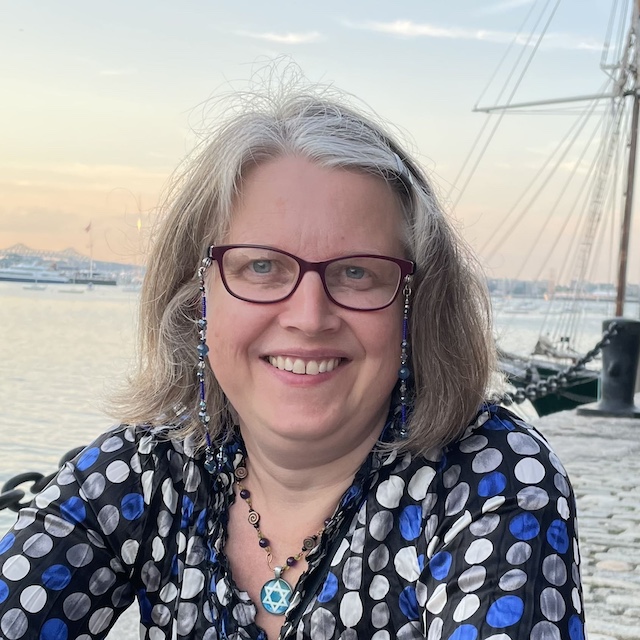The Living Physics Portal has joined with CourseSource (an open-access journal of peer-reviewed teaching resources) to create a pathway for Living Physics Portal contributors to publish a peer-reviewed article along with their curricular materials from the Living Physics Portal. A panel of participants working through this process will present and discuss their materials and experiences with this pathway. Here are the abstracts from the three panelists:
A multiple representation exploration of the ideal gas law
Mayuri Gilhooly, University of New England
Insights from a semester long project on submitting “A multiple representation exploration of the ideal gas law” onto Living Physics Portal and then on to Course Source for publication will be shared. This is a unit from a studio-style, modeling-based introductory physics course designed for life science students in a pre-health sequence at the University of New England. This content is designed for students to explore ideal gas law (PV = NkBT) through hands-on experiments and represent their findings using graphical, mathematical, diagrammatic and verbal models. The curriculum contains reading material, instructor notes, and worksheet problems to assess student learning with solutions.
Applying Course Source with the Living Physics Portal to Present a 3-term set of 24 Human-Centered IPLS Laboratories: Design, Implementation, Assessment, and Publication for Diverse Classroom Settings.
Elizabeth Mills, University of San Diego, Katsushi Arisaka
The first part of this panel discussion presentation reflects on the pre-pandemic design, implementation, and assessment of UCLA's Introductory Physics for Life Sciences Laboratory Revisions, which were taught from 2017-2020 across all IPLS laboratory sections. In this time, thousands of undergraduate students were able to make their own scientific questions around human-centered problems and test their predictions by performing in real world physics activities. E-CLASS assessment data showed an increase in students' reflection in asking their own scientific questions, which was a marked improvement over pre-revision laboratory survey data. Now, post pandemic, these laboratories are available to all who would like to create group-based, human-centered scientific inquiry for their students.
The second part of this panel discussion communicates how this curriculum has been generalized as a pedagogical tool via Course Source. Through the Living Physics Portal, organized and editable information about background materials, student worksheets, equipment lists and instructor manuals/solution sets are available to all educators. The addition of the Course Source publication communicates additional background literature reviews, pedagogical frameworks, learning outcomes and detailed lesson plans to support the bigger picture behind how and why this curriculum was developed. The combination of Course Source publication with the Living Physics Portal library allows for this curriculum to be made accessible for diverse educational settings using evidence-based framework and pedagogy. Various methods of implementation are discussed, so that this curriculum is made accessible for your classroom!
Sharing Life-Science Based Curricula on the Online Platforms of Living Physics Portal (LPP) and CourseSource
Priya Jamkhedkar, PhD, Portland State University
In this panel discussion, I share my experiences about uploading my curriculum to the Living Physics Portal (LPP) and CourseSource. I developed curriculum for an algebra-based introductory physics course for life-sciences majors, which I taught at Portland State University. I wrote a series of articles for this course spanning topics such as balance and base of support, circular motion, elasticity, and rigidity with examples illustrating the elastic properties of bones, teeth, tendons, and blood vessels, energy expenditure in humans, physics of impulse using biomechanical movements, physics of orthodontic movements, and the physics of vertical jumps in mechanics; electric activity of the heart, electroreception in animals, conduction of electrical signals in nerves, use of high energy charged particles and radiation in radiation therapy and medical imaging, and the use of RC circuits as timers in electromagnetism; working of the harmonic scalpel and ultrasound in oscillations and waves, LASIK surgery and optical fibers in endoscopes in optics; and body temperature measurement and thermoregulation in humans in thermodynamics. To share my materials with other instructors, I chose to upload these articles to LPP and CourseSource, where other instructors can download them. As a part of a workshop, I learned how to upload material on both platforms. I will discuss the process of uploading material to both the community library and the vetted library in LPP. I also prepared an article for CourseSource, “Conduction of Electric Signals by Nerves” and will describe the requirements for publication in CourseSource. I will also talk about the ease with which other instructors can download these materials for use in their classes.


